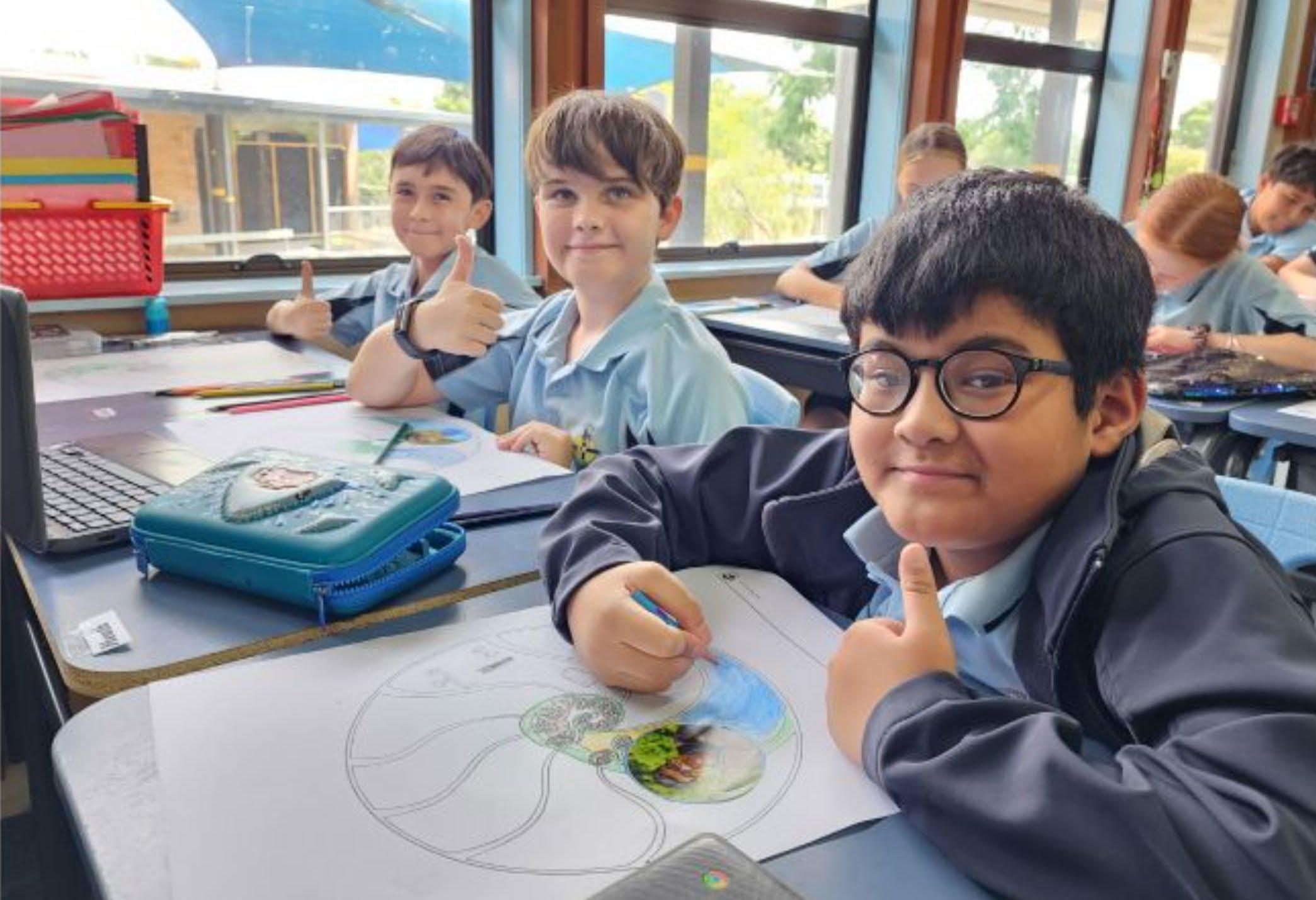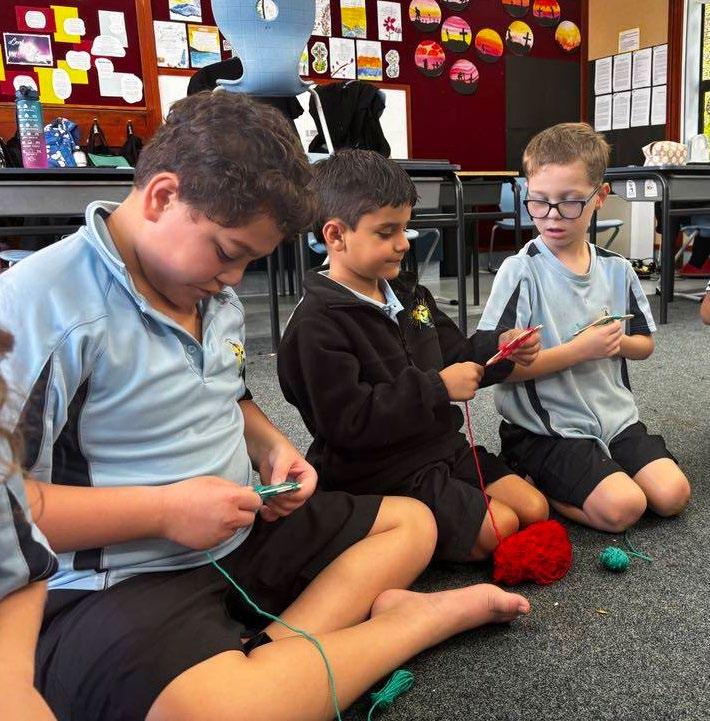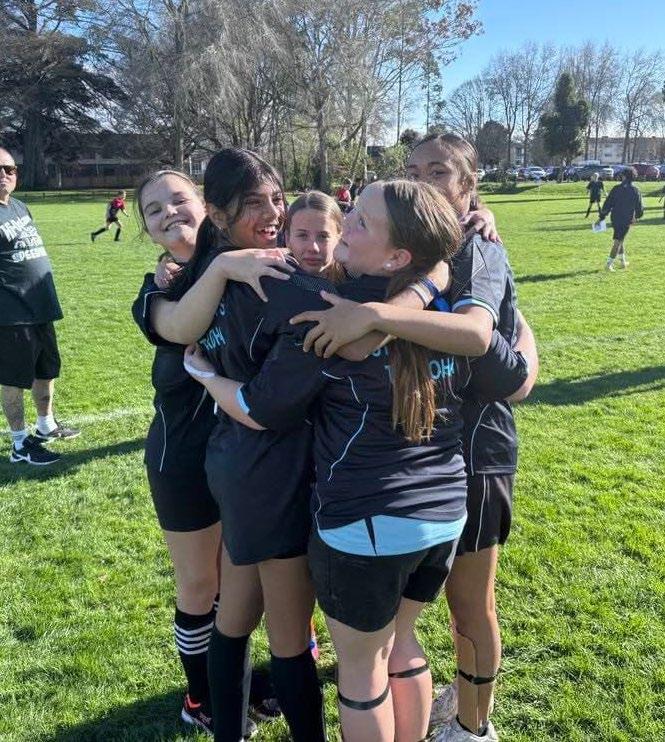
7 minute read
Weaving emotional intelligence into everyday learning
Through student voice, whānau consultation and evidence-based practice, St Joseph’s Catholic School in Paeroa has created a Social and Emotional Learning (SEL) programme that empowers tamariki to manage emotions, build healthy relationships and lead with empathy.
Two years ago, St Joseph’s Catholic School in Paeroa sought to learn what skills, knowledge and values were important to ākonga. Their curiosity produced a Social and Emotional Learning (SEL) programme that has enriched their community and kaupapa.
Now, St Joseph’s ākonga are reportedly more aware of what’s going on inside their heads. Principal Emalene Cull says her learners are more able to talk about feelings; they manage stress and anger more effectively than before, and report feeling heard, valued and empowered.
The school engaged emotional intelligence consultancy RocheMartin to help develop their programme. Now, staff work closely to assess and improve real, observable, community-wide results.
“We are still on this journey. Still learning, still growing,” says Emalene.
“But one thing is clear: when we prioritise emotional intelligence, when we weave together identity, culture and wellbeing, we create a generation of tamariki who are confident, connected and ready to lead with aroha.”

Reviewing values
St Joseph’s SEL programme began after a complete review of the school’s goals and values.
“We put out a consultation across our whole community: all of our parents, our whānau, our parish community, and of course our children,” explains Emalene. “We tried to gather as much voice as we could.”
St Joseph’s questions were simple: what skills, values and knowledge do ākonga need to be successful in life? Results in hand, school staff spent a teacher-only day sifting through data and drawing up plans.
The data, sourced through surveys, interviews and hui with whānau, showed junior students needed more vocabulary to talk about feelings, middle students struggled with selfregulation, and senior students felt stressed but lacked coping skills.
“Social and emotional needs came through quite strongly in our consultation process,” says Emalene.
“What we heard was a clear call for intentional, meaningful learning in emotional intelligence, resilience and connection.
“If a kid can’t express what’s going on for them then that’s where you can start getting some of that explosive kind of behaviour,” she continues, referring to her junior students.
“They can’t express themselves in any other way.”

A progression through the school
For junior students, St Joseph’s set about teaching new kinds of vocabulary to describe feelings.
“They went from knowing happy, sad, mad to knowing a lot more,” says Emalene.
“Children have a greater awareness of emotion,” says teacher Alex Harwood, reflecting on the changes she noticed among her Years 0,1 and 2 students.
“They’re learning to manage themselves when they encounter a social situation they don’t like.”
Older students, from Years 3–5, presented more of a challenge. They struggled with increasingly complicated relationships and emotions.
“We talked about some of those tools to help manage big emotions,” says Emalene, whose ākonga investigated the science behind emotions by looking at neurology. They also learned about self-regulation, including ‘flipping your lid’ strategies to help manage frustration.
Evie, Year 4, says these strategies helped her control her emotions with her brother while Hayden, also Year 4, found neurology classes especially helpful.
“[The lessons] helped me understand my brain and control it a bit more,” says Hayden.
St Joseph’s senior students focused on stress management.
“Something that’s come out quite strongly in our data, since then, has been around anxiety and what’s going on in our world,” says Emalene.
“Everyone’s a bit anxious about that. So, what we’ve done is that we’ve explored different strategies with them,” she continues, describing lessons around tools like box breathing, exercise, journaling, drawing and basic vocabulary for conveying stress.
Emalene says that teachers’ priority was to give senior students tools and strategies which would allow them to manage stress in ways that suited their individual habits and preferences.
“[We gave] them conversation frames where they can actually express themselves,” she explains. “Not to lessen the emotion, but to express themselves in a clearer way.”
“We’re empowering students to know it’s OK to feel emotions” says Year 7–8 teacher, Anna Crawford.
“Down days and happy days are normal. There is no such thing as good emotions or bad emotions – they’re passing.”
Senior students like Kahu, Year 8, noted the positive effects of this self-understanding across many aspects of school life, including in interpersonal relationships.
“It helps me understand how I can be a good friend for others, and who could be a good friend for me,” he says.
“We also strengthened tuakana-teina relationships,” adds Emalene, describing how St Joseph’s SEL programme fostered a ‘culture of care’ both in and outside of class. Some senior ākonga became kaiāwhina: students tasked with looking out for younger peers on the playground.
“This is evidence-based, not hunch-based,” adds Anna, discussing the lessons and workshops she delivered as part of the school’s SEL programme.
“[This approach] gives confidence when having raw and difficult conversations.”

Whānau, faith and the future
Overall, Emalene saw in St Joseph’s data a mandate to meet student needs through evidence-based practice. The school deployed RocheMartin surveys, workshops and exercises that had been tried and tested across the consultancy’s diverse projects.
Matauranga Māori and the school’s Catholic character also inform St Joseph’s SEL journey.
“There’s a real sense of whanaungatanga in this programme,” says Emalene. “We’re not just testing kids and then teaching them, it’s deeper than that.”
St Joseph’s achieved this depth through whānau engagement.
“We knew that learning doesn’t stop at the school gate,” says Emalene. “We want to honour our whānau voice … because they are the first teachers of their child.”
Whānau were consulted throughout the SEL development process, including hui to discuss data following the research phase.
“We wanted to bring that community around each child,” says Emalene. “That way, when we are developing goals or developing coaching questions … we’ve got the family there as well.”
As the programme continued, the school also updated families through newsletters.
“We actively involved whānau in the process, ensuring they had the tools, words and strategies to support SEL at home,” adds Emalene.
The result? Whānau reported more discussions about social and emotional health at home, suggesting SEL learning continued beyond the classroom.
St Joseph’s community-centric SEL model also connects to the school’s Catholic character.
“Our special character is our identity,” says Emalene. “It filters into everything that we do.”
She says the connection between SEL and St Joseph’s charter is simple. “It comes down to relationships,” says Emalene. “It’s your personal relationship with God. It’s your personal relationship with others.”
Looking to the future, St Joseph’s School and community intend to continue with their SEL programme.
Through a series of goal assessments and continued meetings among staff, teachers, whānau and students, Emalene is certain the programme can continue to succeed.
She says other schools can replicate St Joseph’s success through consistent, flexible and responsive SEL teaching; a one-off SEL lesson won’t be as effective. She’s grateful for the support she and her community received and encourages any schools that are set on similar journeys to reach out.
In the meantime, Emalene is incredibly proud of the progress St Joseph’s has made.
“Our biggest shift? Tamariki are learning that emotions are not something to fear – they are something to understand,” she says.
“They see that their voices matter. They feel heard, valued and empowered to navigate life with confidence, empathy and strength.”











